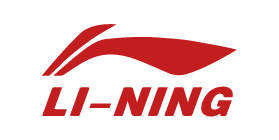案例详情
Case Details


Li-Ning | the "National Fashion Leader" establishing Financial Shared Service Center
Established in 1990, Li-Ning became the first mainland Chinese sports goods company to successfully list on the Hong Kong Stock Exchange, with a nationwide sales network. With the rise of "Guochao" (national trend) in 2018, it launched Guochao products and appeared at New York Fashion Week. The "China Li-Ning" product line has deeply resonated with consumers, establishing itself as a leader in domestic brands.

Project Background
The retail industry is facing the challenge of digital transformation, with decreasing foot traffic offline, difficulties in data insights, and high costs of online traffic acquisition. This reality necessitates the retail industry to adopt a digitally driven omnichannel operational management model. With Li-Ning's extensive sales network, there is a need for headquarters to strengthen fine-grained management of all stores, closely aligning with customer needs based on category characteristics and consumer behavior. Infodator has established an integrated financial shared service center for Li-Ning's finance department. Addressing the longstanding issues of high costs, intense competition, low returns, and difficulties in expansion faced by retail stores, digital transformation of stores is identified as a key approach to enhancing consumer experience, store operational efficiency, and the value of existing and potential customers.
Project Description
Store Opening Tracking:
For the headquarters, establish a new store tracking report data collection system, allowing 26 subsidiary companies' finance departments to fill in cumulative forecast figures based on the new store assessment form. Submit these figures to the North and South Regional Consolidation Officers and Operational Analysis Department within five working days. This facilitates the consolidation of data from the North and South regions by the operational analysis department, enabling the issuance of a new store tracking report. Automate data retrieval and comparison for the tracking report to reduce manual input errors and improve report timeliness. This enables timely understanding of new store performance at the beginning of each month, facilitating rapid adjustment decisions.
Receivables Risk Monitoring:
Establish receivables overdue reminder and capital platform payment reconciliation projects for the headquarters. Automatically trigger accounts receivable overdue reminder reports and set the frequency of email triggers based on urgency. Tailor email notifications to different business dimensions as needed, and automatically generate reimbursement data analysis reports. Log in to the capital platform for payment reconciliation every hour, checking the consistency of each data entry and submitting for approval. Additionally, establish self-cashier store payment reconciliation at branches, assisting in account reconciliation reports confirmed by accounts receivable personnel.
Other Matters:
Automation of tax invoice issuance, subsidiary contract scanning and archiving, input tax selection, and remittance report sending. Fixed-time login to SAP to export internal invoice listings, split and fill in verification tables based on invoice types, and generate invoices. Subsidiary finance departments extract key contract terms, register them in a contract inventory report, and organize invoice data requiring certification, matching and importing data into tables for batch uploading. Automatically log in to online banking daily to export remittance reports for the previous day and automatically send emails based on a payer and company business personnel comparison table.
Project Results
Capvision helped Li-Ning integrate complete user data assets and various data modules, leveraging Li-Ning's extensive network of offline stores. This integration facilitated the alignment of business and financial flows. On one hand, it supported operational decision-making analysis, and on the other hand, it enabled precise marketing targeting based on user data. By enriching the application scenarios of user data, it enhanced the application efficiency of user data and aided finance in transitioning from traditional accounting and financial reporting provider roles to operational supporters, value creators, and risk managers.
